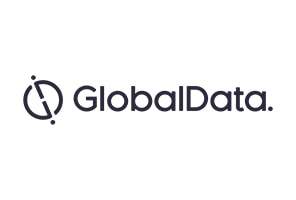
At the American Thoracic Society (ATS) conference, positive results from the Phase III GOLDEN studies were presented demonstrating the safety and efficacy of Sunovion’s SUN-101 (glycopyrrolate) administered by the eFlow closed-system nebulizer for patients with moderate to very severe COPD. Long-acting muscarinic antagonists (LAMAs), alone or in combination with long-acting beta2-agonists (LABAs), are a first line therapy in the treatment of COPD. That being said, there are currently no approved nebulized LAMA therapies for the treatment of COPD. FDA approval of SUN-101/eFlow would mark the first nebulized LAMA therapy to target the COPD space —a significant opportunity for Sunovion.
GOLDEN 3 and 4, two Phase III, double-blind, placebo controlled studies, randomized 653 and 640 patients with moderate to very severe COPD, respectively, to receive SUN-101/eFlow (25 or 50mcg) twice daily or placebo. Patients were stratified by cardiovascular history (64% high risk) and background LABA use (31%). The primary endpoint, change from baseline in trough forced expiratory volume in one second (FEV1) at Week 12, was met in both GOLDEN 3 (p<0.001 for 25 and 50mcg) and 4 (p=0.001 for 25mcg and p=0.0002 for 50mcg) demonstrating clinically important and statistically significant changes in trough FEV1. Statistically significant improvements in forced vital capacity (FVC) and St. George's Respiratory Questionnaire (SGRQ), two of the secondary endpoints, were also observed in GOLDEN 3 and 4 with both doses of SUN-101 compared with placebo at Week 12. A statistically significant improvement in rescue medication use, the third secondary endpoint, was not observed.
In regards to adverse events (AEs), the combined overall incidence of treatment emergent AEs, including COPD, cough, and dyspnea, was numerically lower with SUN-101 25 and 50mcg (43.4% and 50.7%, respectively) compared with placebo (52.3%). Discontinuations due to treatment emergent AEs were highest in the placebo group. The incidence rate of major adverse cardiac events (MACE) per thousand patient years was 16.4 for placebo, zero for SUN-101 (25mcg), and 23.3 for SUN-101 (50mcg) as one cardiovascular death was reported in a patient receiving SUN-101 (50mcg).
Focusing on long-term safety, GOLDEN 5, an open label, active controlled study, randomized patients with moderate to very severe COPD to receive SUN-101/eFlow twice daily (50mcg, n=620) or Spiriva (tiotropium) (18mcg, n=466) once daily both for 48 weeks. Patients were stratified by cardiovascular risk (64%) and background LABA use (42%). The incidence of treatment emergent AEs, one of the primary endpoints, was similar between patients receiving SUN-101 (69%) and Spiriva (67%), with the most frequent being cough and COPD. Investigators of GOLDEN 5 noted that cough associated with SUN-101 could be partially explained by patients’ quick and forceful inhalation of SUN-101 when initially switching from an inhaler device to a nebulizer. Discontinuations due to treatment emergent AEs, another primary endpoint, was 10% and 2.8% for patients receiving SUN-101 (cough 2.3%, dyspnea 1.5%, COPD 1.9%) and Spiriva, respectively. The incidence rate of MACE per thousand person years was 6.4 for SUN-101 and 20.3 for Spiriva.
Further, at Week 48, the change in trough FEV1 from baseline was similar between patients treated with SUN-101 and Spiriva (102mL and 93mL, respectively). Improvements in trough FEV1 were also seen in patients without LABA background therapy (105mL) compared with patients with background LABA therapy (99mL). SUN-101, thus, demonstrates an improvement in lung function as a monotherapy further supporting the use of SUN-101/eFlow as a maintenance treatment of COPD.
See Also:
Although GlobalData only anticipates SUN-101 to only launch in the US, Sunovion’s product is expected to emerge as an effective COPD maintenance treatment, especially as the first nebulized LAMA therapy. Focusing on the competition, Theravance’s revefenacin, a once-daily nebulized LAMA therapy, is in Phase III development in the US for the treatment of moderate to very severe COPD. That being said, revefenacin is expected to launch two years after SUN-101 in 2019, giving Sunovion an opportunity to benefit from limited competition for at least two years post launch in the US COPD market space. GlobalData anticipates SUN-101 to garner $162.6 million in sales in 2025 in the US market alone, with the potential to win additional market approvals.
How well do you really know your competitors?
Access the most comprehensive Company Profiles on the market, powered by GlobalData. Save hours of research. Gain competitive edge.

Thank you!
Your download email will arrive shortly
Not ready to buy yet? Download a free sample
We are confident about the unique quality of our Company Profiles. However, we want you to make the most beneficial decision for your business, so we offer a free sample that you can download by submitting the below form
By GlobalData





Related Company Profiles
American Thoracic Society
FVC, Inc.